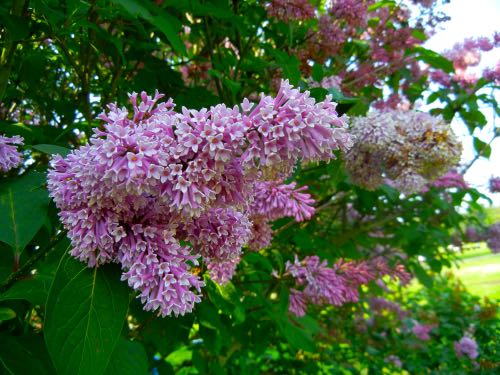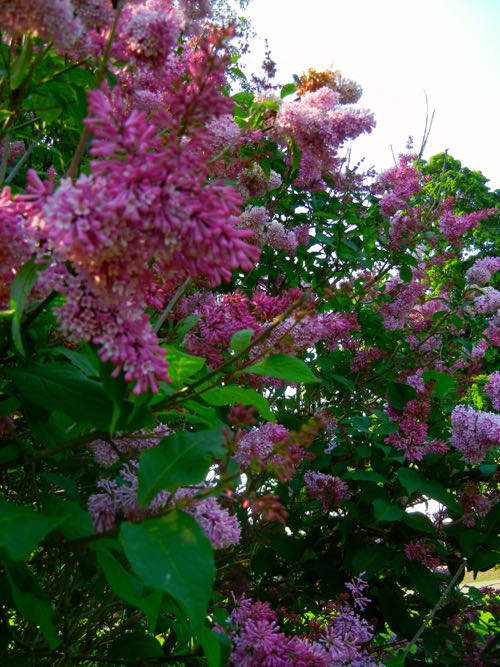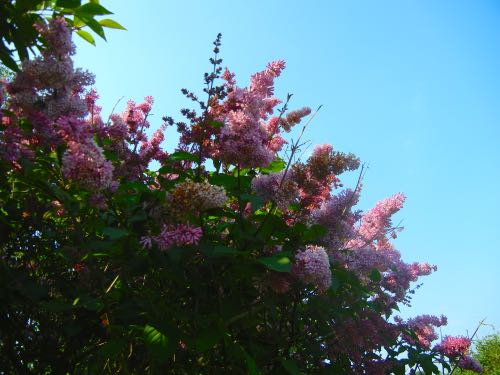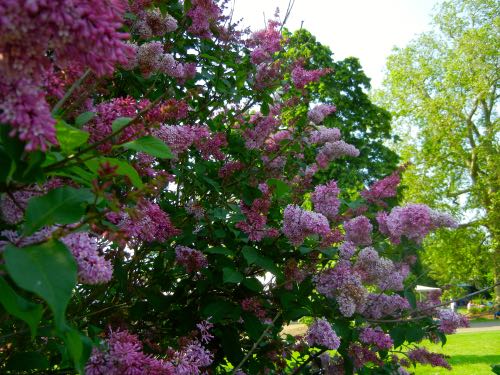Syringa prestoniae: Exploring the Beauty of Preston Lilac
Background: Syringa prestoniae, commonly known as Preston Lilac, is a hardy shrub or small tree that enchants with its abundant and fragrant blooms. This delightful plant is a hybrid, resulting from a cross between two lilac species, Syringa reflexa and Syringa villosa. Belonging to the Oleaceae family, Syringa prestoniae showcases a remarkable combination of characteristics that make it a prized addition to any landscape.
Characteristics and Description: Syringa prestoniae is a deciduous shrub or small tree that grows vigorously to a height of 8-12 feet (2.5-3.5 meters). It boasts oval to elliptical, dark green leaves that measure approximately 15 cm long. The flowers of Syringa prestoniae are generally single and can range in color from lavender to red-purple, with additional variations in pink and white. These beautiful blooms appear in large, pyramidal clusters called panicles, creating a stunning visual display. Some varieties of Syringa prestoniae also possess a mild fragrance, enhancing their allure. The plant blooms in late spring or early summer, adding a splash of color to the garden.
Origin and Native Habitat: Syringa prestoniae is a cultivar, a hybrid plant that does not exist in nature. It was created through the efforts of Miss Isabella Preston, a renowned horticulturist and plant breeder, at the Central Experimental Farm in Ottawa, Canada, in 1920. The plant was named in honor of Miss Preston for her significant contributions to the field of horticulture. Although the parent plants, Syringa reflexa, and Syringa villosa, are native to China, the introduction of Syringa prestoniae cultivars makes them popular and cultivated in various regions worldwide.
Cultivation and Care of Syringa prestoniae:
Syringa prestoniae thrives under specific conditions, ensuring its optimal growth and vitality. Here are some essential tips for successfully cultivating and maintaining Syringa prestoniae:
Planting: Select a sunny location for your Preston Lilac, although it can tolerate partial shade. Ensure the soil is rich and well-drained. If needed, amend the soil with compost or organic matter before planting.
Watering: Provide regular watering, especially during the first year of growth. Once established, Syringa prestoniae exhibits good drought tolerance. Water deeply and infrequently, avoiding overwatering.
Fertilization: Syringa prestoniae generally does not require frequent fertilization. Applying a light fertilizer in the spring can promote new growth and enhance flowering.
Pruning: Prune Preston Lilacs in late winter or early spring to shape the plant and encourage new growth. Removing spent blooms, or deadheading, can also help maintain a neat appearance and encourage more vigorous flowering in the following year.

Pests and Diseases:
Syringa prestoniae is typically resistant to pests and diseases. However, it may be susceptible to anthracnose, a fungal disease that causes black spots on the leaves. If anthracnose is observed, prune affected leaves and branches and consider applying a fungicide as necessary.
Discover the Fragrant Blooms and Hardy Nature of Syringa prestoniae
Syringa prestoniae, with its captivating blooms and hardy nature, is an excellent choice for various landscape applications. Whether used as a focal point, hedge, or border plant, Preston Lilac adds beauty, fragrance, and charm to any garden or outdoor space.
Also, read about: Syringa or Lilac, Syringa tomentella, Syringa vulgaris ‘Madame Lemoine’






